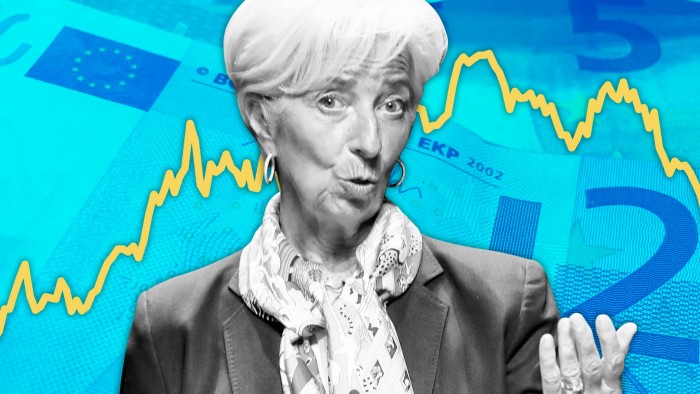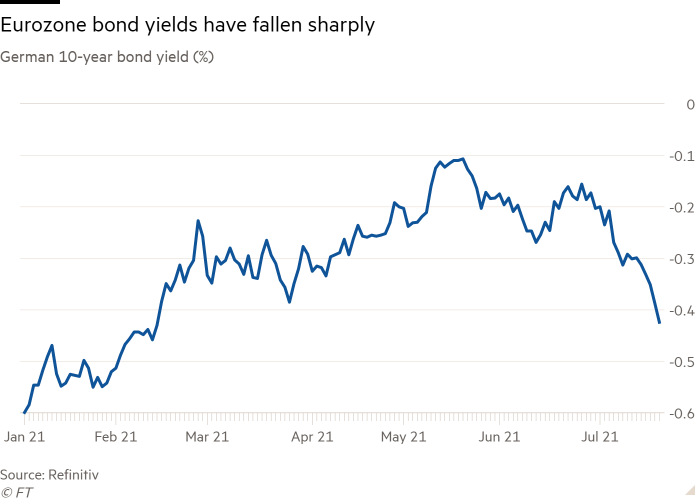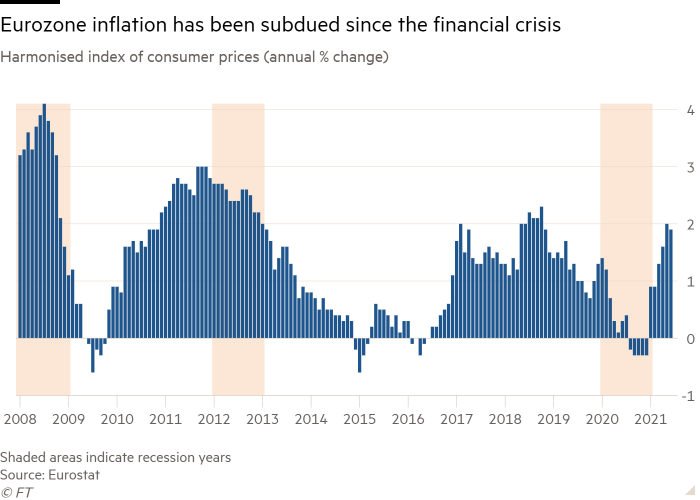‘Forceful for longer’: Investors bet ECB bond buying is here to stay

Roula Khalaf, Editor of the FT, selects her favourite stories in this weekly newsletter.
Investors are betting the European Central Bank’s new strategy means it will keep buying bonds for longer, driving yields in the eurozone lower. But the central bank still has its work cut out to convince markets it can hit its revised inflation target.
Christine Lagarde is aware of the challenge, and the ECB president told the Financial Times this month that the “proof of the pudding will be in the eating”.
ECB watchers will get a look at how the new strategy will be put into action on Thursday when the central bank is due to deliver fresh guidance on monetary policy.
Most investors expect Lagarde to indicate the ECB will beef up its bond-buying plans beyond the end of its €1.85tn pandemic emergency purchase programme (PEPP) next year, and be more patient before it raises interest rates. But they are unsure exactly how aggressive the new guidance will be and what difference it will make.
“The ECB has materially reduced the chances of premature tightening,” said Elga Bartsch, head of economic and markets research at the BlackRock Investment Institute. “It is now, when the new strategic framework is implemented, that we could get dovish surprises.”

Germany’s 10-year bond yield tumbled to minus 0.41 per cent on Tuesday, the lowest level since February, as growing fears over the Delta coronavirus variant spurred demand for safe assets. But bonds in the euro area had already been rallying since the ECB concluded its 19-month-long strategy review two weeks ago by agreeing a simplified and slightly higher inflation target of 2 per cent.
“Beyond the PEPP there’s going to be a serious buying programme, and it’s hard to imagine they won’t emphasise that message,” said Robert Tipp, head of global bonds at PGIM Fixed Income. “This is ultimately bond supportive.”
The ECB governing council also agreed its policy needed to be especially “forceful and persistent” when operating in a low rate, low inflation world — as it is now — which it said may imply a moderate and transitory overshooting of its new target.
This does not go as far as the US Federal Reserve, which decided last year to adopt an average inflation target. Nevertheless, economists expect the ECB’s updated guidance to state inflation may rise temporarily above its objective.
Lagarde promised the new guidance will be “clearer and crisper” with less jargon. She told the FT: “When we say that our response has to be especially forceful or persistent, I think persistent is precisely intended to signal that we will not prematurely tighten.”
Luigi Speranza, chief global economist at BNP Paribas, said the ECB was “already acting forcefully” by buying €80bn of bonds a month via its PEPP, adding: “Now they are saying it will be forceful for longer by being persistent.”
He said one way it could do this is by saying that higher inflation has to be “visibly reflected in actual underlying inflation dynamics” before it considers its new target to be hit — something ECB executive Isabel Schnabel already said twice in recent weeks.
This implies that it will also look at core inflation, stripping out more volatile energy and food prices, and wait for robust evidence of it rising sustainably in line with its 2 per cent target. It may also indicate that wages need to rise at a healthy pace before it will react.
“The ECB opened the door to a more dovish strategy with the release of its new strategic framework,” said Krishna Guha, vice-chairman at Evercore ISI. “Now it has to walk through it.”
The ECB has a powerful influence on bond markets, and since the start of 2020 it has purchased almost the entire new issuance of eurozone government bonds, taking its holdings to about 42 per cent of all sovereign debt in the bloc.
Investors will also be looking for any signs that the ECB’s regular asset purchase programme — still running at €20bn a month — will be expanded to €40bn-€60bn and made more flexible to maintain a high level of stimulus when the PEPP is wound down.
Silvia Ardagna, an economist at Barclays, predicted the ECB would buy a further €700bn of assets next year, adding: “The key message of the ECB’s revised forward guidance will be ‘loose for longer’.”
However, the Frankfurt-based institution is unlikely to provide details for ending PEPP before it publishes its next economic forecasts in September, when it will have a better idea about the impact of Delta coronavirus on economic growth.

Meanwhile, there are lingering doubts over the ECB’s ability to hit its higher inflation target given its long struggle with very low inflation. Despite cutting interest rates deep into negative territory and buying trillions of euros of assets, eurozone inflation has averaged only 1.2 per cent since the 2008 financial crisis.
Euro five-year five-year inflation swaps — a popular market-based measure of long-term inflation expectations closely watched by the central banks — currently trade at only 1.56 per cent despite the pick-up in current inflation as economies reopen.
“The ECB invites the question of how it will achieve this more ambitious goal from such a low starting point while using the same old tools,” said Andrew Bosomworth, a managing director at Pimco. “This creates a credibility issue that we think will leave inflation expectations subdued.”
This article has been corrected to make clear Krishna Guha is vice-chairman at Evercore ISI, not vice-president
Comments